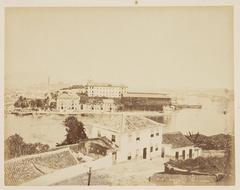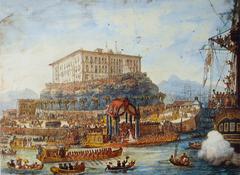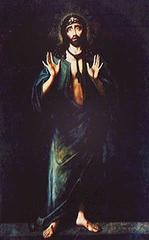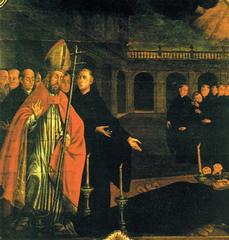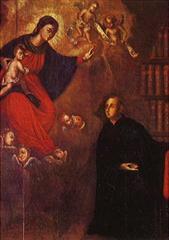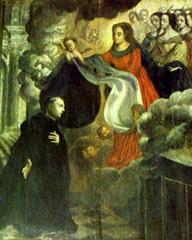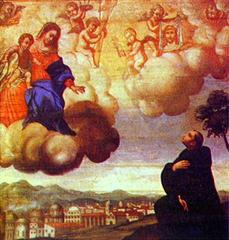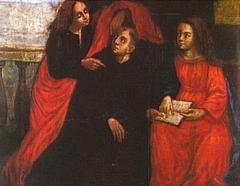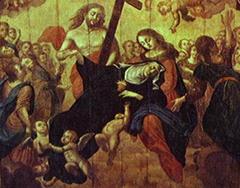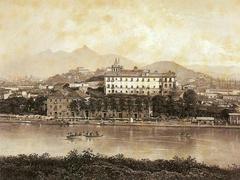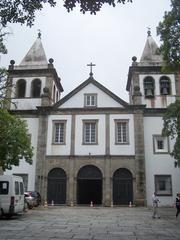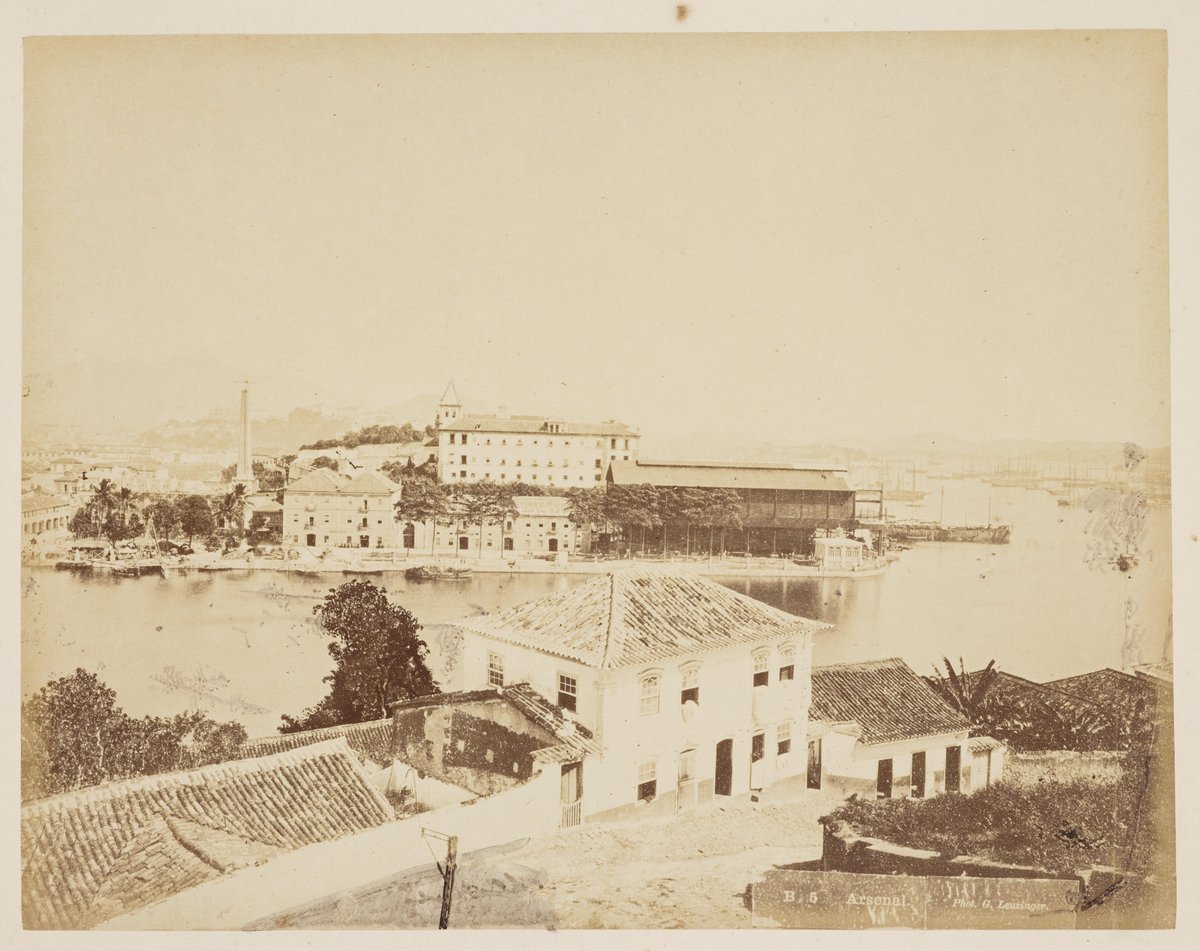
Mosteiro de São Bento Rio de Janeiro: Visiting Hours, Tickets, and Travel Guide
Date: 14/06/2025
Introduction: History and Cultural Significance
Perched atop Morro de São Bento in downtown Rio de Janeiro, the Mosteiro de São Bento is one of Brazil’s most important religious and cultural landmarks. Founded in 1590, it is among the oldest Benedictine monasteries in the country and is internationally renowned for its exquisite Baroque and Rococo interiors, the sound of Gregorian chant during Mass, and its enduring influence on the city’s educational and cultural life. The monastery offers a unique opportunity to experience Brazil’s colonial heritage and the living traditions of Benedictine monasticism. This guide provides comprehensive information on visiting hours, ticketing, accessibility, guided tours, and nearby attractions, ensuring a rewarding and informed visit. For official updates, consult the Mosteiro de São Bento official website, Riotur, and Destinos do Rio.
Contents
- Introduction: History and Cultural Significance
- Architectural Highlights
- Exterior Design: Portuguese Mannerism
- Interior Splendor: Baroque and Rococo
- Cloister and Decorative Elements
- Visiting Hours and Ticket Information
- Accessibility and Facilities
- Guided Tours and Special Events
- Religious Services and Spiritual Experience
- Educational and Cultural Contributions
- Nearby Attractions and Travel Tips
- Photographic Spots
- Frequently Asked Questions
- Conclusion
Architectural Highlights
Exterior Design: Portuguese Mannerism
The Mosteiro de São Bento exemplifies Portuguese Mannerist architecture, with a sober façade that belies the opulence within. Its simple lines, restrained ornamentation, and twin towers—capped with pyramidal pinnacles—stood as navigational markers for ships entering Guanabara Bay until the late 19th century (Imaginario de Janeiro). The entrance features three arches and a triangular pediment, with black and white marble flooring and traditional Portuguese tiles, emphasizing its colonial roots (World Top Top).
Interior Splendor: Baroque and Rococo Artistry
Inside, visitors are greeted by some of the most breathtaking Baroque and Rococo art in Brazil. The church’s interior is covered in intricate rosewood carvings, lavishly gilded with 18-karat gold. The main altar, dedicated to Our Lady of Montserrat, is surrounded by ornate side chapels and features sculptures by the monk Frei Domingos da Conceição. The Chapel of the Blessed Sacrament is a Rococo masterpiece, completely covered in gold leaf (Imaginario de Janeiro).
The nave and choir are adorned with paintings and sculptures that narrate the history of the Benedictine order. The historic pipe organ, with pipes dating to 1773, is still played during Masses, and the acoustics of the nave enhance the ethereal effect of Gregorian chant (World Top Top).
Cloister and Decorative Elements
The 18th-century cloister, generally closed to the public except on special religious occasions, is a tranquil space for monastic life. The monastery also features azulejo tilework, silver lampstands, and a remarkable collection of religious imagery, including twelve statues representing Benedictine saints and a stone baptismal font from Minas Gerais (Wikipedia).
Visiting Hours and Ticket Information
-
General Opening Hours:
- Monday to Friday: 7:00 AM – 6:00 PM
- Saturday: 8:00 AM – 5:00 PM
- Sunday: 8:00 AM – 12:00 PM
- The Sunday 10:00 AM Mass, with Gregorian chant, is a highlight.
-
Admission: Free. Donations are appreciated to support preservation. Special concerts or events may require advance booking and a nominal fee.
-
Guided Tours: Available occasionally; check on-site or via official sources for current schedules.
Accessibility and Facilities
- Location: Rua Dom Gerardo, 68, Centro, Rio de Janeiro. Easily accessible by metro (Carioca Station, Line 1) and by numerous bus lines.
- Parking: Limited on-site parking is available, a rare convenience in the city center.
- Accessibility: Main visitor areas are accessible via ramps and a public elevator at Rua Dom Gerardo, 40. Some upper areas, such as the choir, may have limited access. Contact the monastery ahead for specific needs.
- Facilities: Clean restrooms, a bookstore/souvenir shop, and clear signage for visitors.
Guided Tours and Special Events
- Tours: While regular English-language tours are not offered, visitors can explore independently with informational plaques in Portuguese. Private guides may be arranged.
- Events:
- Gregorian Chant Mass: Sundays at 10:00 AM.
- Classical Concerts: Held periodically—check schedules on the official website.
- Religious Festivals: Notable processions occur on dates such as Corpus Christi and All Souls’ Day, sometimes allowing access to the cloister.
Religious Services and Spiritual Experience
As an active Benedictine monastery, daily routines revolve around the Divine Office and Mass. The Sunday 10:00 AM Mass, accompanied by Gregorian chant and organ, is open to the public and considered one of Rio’s top spiritual experiences. Silence and respectful behavior are expected during religious services (Wikipedia).
Educational and Cultural Contributions
The Mosteiro de São Bento is an influential center of education and culture. The attached Colégio de São Bento, founded in 1858, is one of Brazil’s most prestigious schools. The monastery also supports the Faculdade de São Bento, offering Philosophy and Theology courses, and hosts periodic concerts, lectures, and art exhibitions (Tripomatic).
Nearby Attractions and Travel Tips
Nearby Sites:
- Municipal Theater of Rio de Janeiro (Teatro Municipal)
- National Museum of Fine Arts
- Biblioteca Nacional
- Praça Mauá, Museu do Amanhã, and Rio Art Museum
Tips:
- Dress modestly (shoulders and knees covered).
- Visit early or on weekdays for fewer crowds; Sundays are popular but offer the unique Mass experience.
- Photography is allowed in most areas (no flash or tripods during services).
- The surrounding area is generally safe during daylight; standard precautions advised.
Photographic Spots
- The façade with twin towers and panoramic city views.
- The gilded main altar and side chapels.
- Details of rosewood carvings and gold leaf.
- The historic organ and choir.
- Best lighting: Mid-morning or late afternoon.
Frequently Asked Questions (FAQ)
Q: What are the Mosteiro de São Bento visiting hours?
A: Monday to Friday 7:00 AM – 6:00 PM, Saturday 8:00 AM – 5:00 PM, Sunday 8:00 AM – 12:00 PM.
Q: Is there an entrance fee?
A: No, admission is free; donations are welcome.
Q: Are guided tours available?
A: Occasional tours; arrange in advance or check on arrival.
Q: Is the monastery accessible for people with disabilities?
A: Main areas are accessible; some sections may be limited. Use the public elevator at Rua Dom Gerardo, 40, and contact ahead for details.
Q: Can I take photos inside?
A: Yes, except during Mass or religious services; avoid flash.
Q: How do I get there by public transport?
A: Metro to Carioca Station (Line 1) or downtown bus lines; a 10-minute walk from the station.
Conclusion and Recommendations
A visit to the Mosteiro de São Bento is an immersion in Brazil’s colonial history, religious tradition, and Baroque artistry. The gilded interiors, haunting Gregorian chant, and panoramic city views make it a highlight for any visitor to Rio de Janeiro. Combine your visit with nearby cultural sites for a complete experience. Always check the official website for current schedules and event updates, and consider using the Audiala app for audio guides and real-time visitor information.
Suggested Visuals:
References
- Mosteiro de São Bento official website
- Riotur: Mosteiro de São Bento
- Destinos do Rio: Mosteiro de São Bento
- Wikipedia: Mosteiro de São Bento
- Imaginario de Janeiro: Monastery of São Bento
- World Top Top: Mosteiro de São Bento
- Tripomatic: St. Benedict Monastery
- Wikipedia: São Bento Monastery
